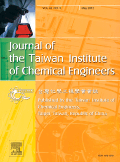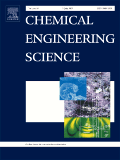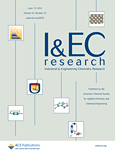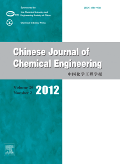
THEORETICAL FOUNDATIONS OF CHEMICAL ENGINEERING
Scope & Guideline
Charting New Territories in Chemical Engineering Research
Introduction
Aims and Scopes
- Chemical Process Modeling and Simulation:
Focuses on developing and applying mathematical models to simulate chemical processes, including reaction kinetics, transport phenomena, and thermodynamic behavior. - Separation Technologies:
Explores various separation techniques, including distillation, extraction, and chromatography, emphasizing theoretical foundations and optimization strategies. - Material Science and Nanotechnology:
Investigates the synthesis and characterization of novel materials, including nanocomposites and catalysts, with applications in chemical processes. - Sustainable Chemical Engineering:
Addresses environmental and sustainability issues in chemical engineering, including waste treatment, resource recovery, and green chemistry practices. - Heat and Mass Transfer:
Examines the principles and applications of heat and mass transfer in chemical processes, focusing on enhancing efficiency and effectiveness. - Computational Methods in Chemical Engineering:
Utilizes advanced computational techniques, including CFD and AI, to analyze and optimize chemical engineering processes.
Trending and Emerging
- Deep Eutectic Solvents:
Research on deep eutectic solvents is gaining traction due to their potential as green solvents for extraction processes and their applications in various chemical reactions. - Artificial Intelligence and Machine Learning Applications:
The integration of AI and machine learning in optimizing chemical processes and modeling is becoming increasingly prominent, highlighting the industry's shift towards data-driven approaches. - Bioprocess Engineering:
There is a growing focus on bioprocesses, including fermentation and biocatalysis, reflecting the rising interest in sustainable and renewable resources. - Nanomaterials in Catalysis:
The use of nanomaterials and nanotechnology in catalytic processes is trending, showcasing innovations that enhance reaction rates and selectivity. - Process Intensification:
Research on process intensification techniques, such as microreactors and integrated processes, is emerging as a key area, aimed at improving efficiency and sustainability in chemical manufacturing.
Declining or Waning
- Traditional Chemical Engineering Processes:
There is a noticeable decrease in publications focused solely on conventional chemical engineering processes, suggesting a shift towards more innovative and interdisciplinary approaches. - Basic Thermodynamics:
Papers centered on fundamental thermodynamic principles are becoming less frequent as the field moves towards more complex and applied thermodynamic studies. - Classical Separation Techniques:
Research on classical separation methods like simple distillation is waning, with a preference for advanced techniques that incorporate modern technologies and materials. - Chemical Process Safety:
While safety remains critical, the specific focus on traditional chemical process safety methodologies has diminished in favor of broader environmental and sustainability considerations. - Single-Phase Flow Dynamics:
Studies dedicated exclusively to single-phase flow dynamics are less common, as research increasingly incorporates multi-phase and complex flow scenarios.
Similar Journals

Journal of the Taiwan Institute of Chemical Engineers
Pioneering discoveries that shape the world of chemical engineering.The Journal of the Taiwan Institute of Chemical Engineers is a prestigious publication in the field of chemical engineering and chemistry, published by Elsevier. With an impressive impact factor placing it in the top quartiles (Q1) of both the Chemical Engineering (miscellaneous) and Chemistry (miscellaneous) categories, this journal serves as a vital platform for disseminating cutting-edge research and innovative findings. Since its inception in 2009 and continuing through 2024, it has established a strong reputation with notable Scopus rankings—ranked 40th out of 273 in General Chemical Engineering and 62nd out of 408 in General Chemistry, reflecting the journal’s significance in its field. By offering open access options, the journal ensures that research is readily available to a global audience, fostering collaboration and knowledge exchange among researchers, professionals, and students. The Journal of the Taiwan Institute of Chemical Engineers is dedicated to advancing the discipline of chemical engineering and supporting the development of novel scientific methodologies and applications.

Engineering Review
Exploring practical applications for a sustainable future.Engineering Review is a prominent academic journal published by the University of Rijeka, Faculty of Engineering in Croatia. As an emerging outlet in the field of engineering, the journal has been providing a platform for interdisciplinary research since its inception in 2011, with a commitment to disseminating high-quality studies up to the horizon of 2024. Although currently categorized as Q4 in the Engineering (miscellaneous) section and ranking 242 out of 307 in General Engineering per Scopus metrics, the journal aims to bolster its impact and reach within the engineering community. With a focus on innovative approaches and practical applications in various engineering disciplines, Engineering Review invites contributions from researchers, professionals, and students alike, fostering a collaborative environment for the advancement of engineering research in a global context. While it is not an open-access journal at this time, it remains a vital resource for those engaged in cutting-edge engineering endeavors.

CHEMICAL ENGINEERING SCIENCE
Pioneering Research in Chemical Processes and ApplicationsChemical Engineering Science is an esteemed journal published by Pergamon-Elsevier Science Ltd, dedicated to advancing the field of chemical engineering through high-quality research and innovation. With a storied history spanning from 1951 to 2025, this journal is recognized as a leading platform for disseminating cutting-edge studies, encompassing a diverse range of topics within chemical engineering, applied mathematics, and industrial engineering. Notably, it holds a prestigious Q1 ranking in several categories, including Chemical Engineering and Industrial and Manufacturing Engineering, indicating its significant impact and influence in these fields. The journal is not open access, yet it maintains a robust readership and is widely cited in academic circles, reflecting its vital role in shaping modern engineering practices. As a vital resource for researchers, professionals, and students alike, Chemical Engineering Science continues to bridge theoretical concepts and practical applications, fostering a deeper understanding of the complex challenges in chemical processes and manufacturing.

INDUSTRIAL & ENGINEERING CHEMISTRY RESEARCH
Elevating Industrial Chemistry to New HeightsINDUSTRIAL & ENGINEERING CHEMISTRY RESEARCH, published by the American Chemical Society, is a pivotal journal that disseminates high-quality research in the fields of Chemical Engineering, Chemistry, and Industrial and Manufacturing Engineering. With an impressive impact factor, this journal ranks in the top quartile (Q1) across multiple categories, reflecting its significance and influence within the scientific community. Since its inception in 1987, IECR has provided a platform for researchers, professionals, and students to publish innovative findings that advance the understanding and application of engineering chemistry. Though it operates under a subscription model, the journal continues to foster collaboration within the field, inviting contributions that span theoretical advancements, experimental studies, and practical applications. Whether you are engaged in academia or industry, IECR serves as a vital resource for staying abreast of the latest developments in chemical and engineering research.

Izvestiya Vysshikh Uchebnykh Zavedenii Khimiya i Khimicheskaya Tekhnologiya
Pioneering Research for a Sustainable Chemical FutureIzvestiya Vysshikh Uchebnykh Zavedenii Khimiya i Khimicheskaya Tekhnologiya is a prominent academic journal dedicated to the fields of chemistry and chemical technology, published by the esteemed IVANOVSKOGO KHIMIKO-TEKHNOLOGI TSHESKOGO INST in the Russian Federation. With an ISSN of 0579-2991 and E-ISSN of 2500-3070, this journal has been a crucial platform since its inception in 1980, showcasing significant advancements and research findings, particularly in its converged periods from 1980, 1982, and 2017 to 2024. The journal is ranked Q3 in Chemical Engineering and Chemistry, reflecting its dedication to quality scholarship. Although open access options are currently unavailable, the journal plays a vital role in disseminating knowledge and fostering collaboration among researchers, professionals, and students in these critical scientific domains. Situated in Ivanovo, Russia, it continues to be a focal point for impactful research, making it an essential resource for those aiming to stay at the forefront of innovation in chemistry and chemical engineering.

Chemical Product and Process Modeling
Bridging theory and practice in chemical engineering modeling.Chemical Product and Process Modeling is a vital academic journal published by WALTER DE GRUYTER GMBH, focusing on the intricate intersection of chemical engineering and mathematical modeling. Since its inception in 2006, this journal has been instrumental in disseminating significant research findings and methodologies that advance the modeling and simulation of chemical products and processes. With an ISSN of 1934-2659, it caters to a global audience from its base in Berlin, Germany. Although positioned within the Q3 and Q4 quartiles in Chemical Engineering and Modeling & Simulation categories respectively in 2023, it offers a platform for innovative approaches and contributions in these fields, making it a resource for researchers and industry experts alike. Access to the journal's content is offered through subscription models, enabling professionals and academics to stay abreast of the latest developments. In a rapidly evolving scientific landscape, Chemical Product and Process Modeling remains dedicated to enhancing knowledge and fostering collaboration within the chemical engineering community.

Physical Chemistry Research
Bridging theory and application in the world of physical chemistry.Physical Chemistry Research, published by the Iranian Chemical Society, is an esteemed academic journal dedicated to advancing knowledge within the fields of *Fluid Flow and Transfer Processes*, *Physical and Theoretical Chemistry*, and *Statistical and Nonlinear Physics*. Since its inception in 2013, the journal has established a crucial platform for researchers, professionals, and students to share innovative findings and methodologies, enhancing collaboration and knowledge dissemination in the physical chemistry community. With impactful contributions recognized in Quartile 3 and Quartile 4 classifications across various categories, the journal is positioned to cultivate emerging research trends as it continues to converge through 2024. Researchers can benefit from diverse perspectives on crucial phenomena in physical chemistry, as the journal is indexed in prominent databases, further increasing accessibility and visibility. The *open access* policy ensures that cutting-edge research remains available to a broad audience, promoting the growth of the discipline globally.

CHEMICAL AND PETROLEUM ENGINEERING
Exploring the Frontiers of Chemical and Petroleum TechnologiesChemical and Petroleum Engineering is a prestigious academic journal dedicated to the advancement of knowledge in the fields of chemical engineering and petroleum technologies. Published by Springer, this journal serves as a vital resource for researchers, professionals, and students interested in the intricate processes and innovations that drive these industries. With an ISSN of 0009-2355 and an E-ISSN of 1573-8329, it has established a notable presence since its inception in 1965. Throughout its converged years, the journal has continually published impactful research that contributes to sustainability and efficiency within the sectors. Although it holds a Q3 ranking in Chemical Engineering and Fuel Technology and a Q4 ranking in Energy Engineering and Geochemistry, it is a noteworthy platform for emerging studies, fostering connections among scholars. Readers will find a wealth of information and ideas, but please note that this journal does not currently offer open access options. For those passionate about chemical and petroleum engineering, this journal is an essential part of staying informed and engaged with the latest scientific advancements.

Hemijska Industrija
Pioneering Research in Chemical Engineering and ChemistryHemijska Industrija, an esteemed journal published by the Association of Chemical Engineers of Serbia, serves as a critical platform for advancing knowledge in the fields of chemical engineering and chemistry since its inception in 1989. With an Open Access policy adopted in 2017, the journal provides global access to cutting-edge research and innovative findings, enhancing visibility for authors and fostering collaboration among researchers, professionals, and students alike. This peer-reviewed journal currently holds a Q3 ranking in both Chemical Engineering (miscellaneous) and Chemistry (miscellaneous) categories, signifying its growing impact in these fields. Published in Belgrade, Serbia, Hemijska Industrija not only disseminates high-quality articles from various disciplines within chemical science but also emphasizes interdisciplinary approaches and practical applications, making it an invaluable resource for anyone seeking to stay at the forefront of chemical innovations.

Chinese Journal of Chemical Engineering
Fostering Innovation in Chemical Engineering and BeyondChinese Journal of Chemical Engineering, published by CHEMICAL INDUSTRY PRESS CO LTD, is a premier academic journal dedicated to advancing the field of chemical engineering and related disciplines. With a strong emphasis on innovative research and practical applications, the journal spans a wide range of topics including biochemistry, environmental engineering, and general chemistry. Boasting a commendable impact factor and a consistent presence in Q2 quartiles across multiple categories, it ranks impressively in Scopus, notably positioned in the top percentile of its fields, enhancing its credibility and reach among the scientific community. Published continuously since 1993 and converging towards its 2024 goals, the journal remains committed to fostering sustainable and impactful research. Researchers, professionals, and students alike will find invaluable resources and cutting-edge insights, making the Chinese Journal of Chemical Engineering an essential platform for disseminating pivotal work in the realms of chemical and environmental sciences.